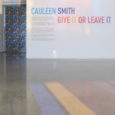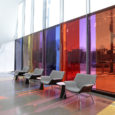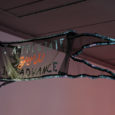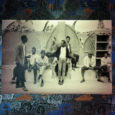Introduction
Hi, my name is Cauleen Smith and I’m an interdisciplinary artist.
We’re kind of living in a cynical time where people are really quick to suggest that there’s no point in thinking about utopia — utopia isn’t possible, utopia is a farce — and thinking about utopia can’t be worse than the kind of systems that we have people living in now. So why not think about them? And why not actually point to instances where people did social experiments that were actually successful?
The wallpaper is kind of like this map that attempts to connect them all. So the four sites depicted are the Watts Towers, Alice Coltrane ashram in Malibu, some sculptures in Noah Purifoy’s outdoor museum, and then there’s another image, it was a recording of a Combahee River Battle which was a battle that was won and surveyed and organized by Harriet Tubman during the civil war. The Combahee River became a symbol for this group of feminists in the 70’s. They became a collective, were envisioning like a more socially just world, so I depicted it as well because it’s like this double speculation that’s like something that happened that wasn’t known and then a group of women reclaiming that history to talk about a possible future.
So these are to me these like amazing models of the way in which you can give something and leave it at the same time.
Film Gels
Sit At The Feet of Action is a strip of windows, front facade of the ICA building.
They’re covered with Lee Filters film gels. This is an acetate material that you use to change the color of light so that light can imitate different times of day or have different tones or textures and when I started working in the space and thinking about light in a very particular way, my training kind of pointed me back to these materials as being a way to carve out a different kind of psychological space inside of another one.
“Sit at the feet of action” is the first line of a quote from Alice Coltrane and it’s referencing what you should be doing at dawn, thinking about how you’re going to approach your day, or your life. And the way that I decided what colors to use was really based on this obsessive, and yet casual, observation of the sky at dawn and at sunset. Literally comparing Lee Filters gels to the colors that I was registering in the sky.
It’s really difficult to remember as a human being that we are on a planet which is basically our spaceship which is orbiting around the sun and one of the ways that you can remember that is by tracking the way that the light changes. And so instead of it simply being a light and shadow which we take for granted, it becomes a color and the color changes. That’s why these lawn chairs are pointed at a blank wall, so that you can subtly see the color of the light change over the course of the day. It’s the thing I really want people to consider.
Banners
The banners in this exhibition are mimicked after something that doesn’t really exist in real life.
I was looking for a way to use text and a way to make an announcement that kind of mimicked activism but also led to other forms and platforms so that’s why these banners are functioning like 3D ribbons even though that’s like a 2D thing.
In my mind there’s a beginning and an end to this exhibition. The one at the beginning says “I appreciate you in advance” which is this, I think, very endearing, maybe very bossy, way some older women that I’ve met in Chicago have of addressing younger people when they need them do something and they’re just only going to tell you once. And so they’re like thanking you before you even get it done. I just love that kind of exchange. It’s something you can only say to certain people under certain circumstances, but it’s simultaneously kind of authoritative and affectionate and playful.
But then at the end of the exhibition there’s a banner that says “Afflict the comfortable and comfort the afflicted”. That was sort of a way of re-grounding this exhibition which I think because it has a lot of sparkles and glitter can easily be consumed on this pleasure level, but I’m actually wanting people to consider the stakes of our everyday lives and at any given time our power dynamics could shift and someone who appears powerful could be vulnerable or vice versa.
What could happen if we change some things a little bit, and re-shift our values?
Watts Tower + Sojourner
Simon Rodia is also a really crucial figure. He was an Italian immigrant and spent 25 years building the Watts Towers which are these towers that are over a hundred feet tall and are a permanent fixture in south central L.A.
When he was finished he just signed the deed over to his neighbor and walked away from them and the Watts Towers to this day kind of function as an artery for this neighborhood that otherwise would be completely neglected and it gives them a kind of cultural leverage.
Time Life photographer Billy Ray was charged with going to Watts after the riots to find the seething, angry negro population ready to riot again and he went and he, you know, made pictures like that but he also made this whole series of pictures with this group of young men who seem to be working with him to produce these amazing images. To me that image has been really kind of intoxicating cause it looks like a fashion shoot, but it’s supposed to be this document of social unrest, and unease, and rage, and actually everyone looks quite sort of gentile.
At the end of Sojourner, I constructed the entire film shoot around reenacting this photograph. So I just decided to completely flip the focus and take all these women and instead of having them do this at the Watts Towers, have them in Noah Purifoy’s spot out in the desert, transformed into some like new, speculative future where we’re thinking about the most vulnerable population instead of the one that’s sort of highlighted as being a threat.

 Closed
Closed
 10 AM-4 PM
10 AM-4 PM

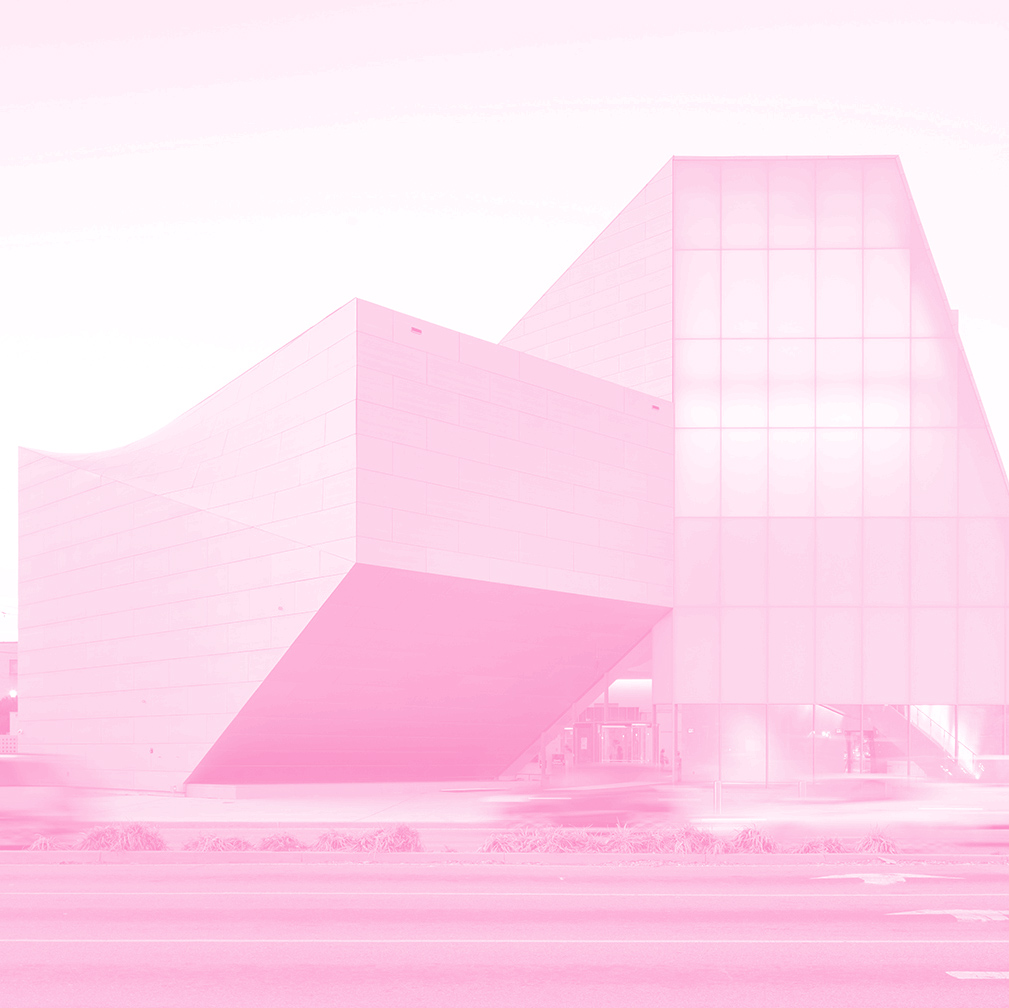 Area Map
Area Map  Parking
Parking 